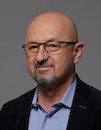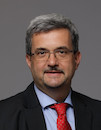High-Frequency and Microwave Electronics
Data is displayed for academic year: 2023./2024.
Laboratory exercises
Course Description
Specifics of circuits used at high frequencies, distributed parameters. Analysis of transmission line, impedance matching. Passive and active microwave networks. Microwave semiconductor devices, diodes, transistors. Nonlinear networks, amplifiers, oscillators.
Study Programmes
University graduate
[FER3-HR] Audio Technologies and Electroacoustics - profile
Elective Courses
(2. semester)
[FER3-HR] Communication and Space Technologies - profile
Elective Courses
(2. semester)
[FER3-HR] Computational Modelling in Engineering - profile
Elective Courses
(2. semester)
[FER3-HR] Computer Engineering - profile
Elective Courses
(2. semester)
[FER3-HR] Computer Science - profile
Elective Courses
(2. semester)
[FER3-HR] Control Systems and Robotics - profile
Elective Courses
(2. semester)
[FER3-HR] Data Science - profile
Elective Courses
(2. semester)
[FER3-HR] Electrical Power Engineering - profile
Elective Courses
(2. semester)
[FER3-HR] Electric Machines, Drives and Automation - profile
Elective Courses
(2. semester)
[FER3-HR] Electronic and Computer Engineering - profile
Elective Courses
(2. semester)
[FER3-HR] Electronics - profile
(2. semester)
[FER3-HR] Information and Communication Engineering - profile
Elective Courses
(2. semester)
[FER3-HR] Network Science - profile
Elective Courses
(2. semester)
[FER3-HR] Software Engineering and Information Systems - profile
Elective Courses
(2. semester)
Learning Outcomes
- explain the notion of distributed parameters
- state the types and characteristics of transmission lines
- derive transmission line parameters
- analyze a linear or linearized microwave network
- explain the operating principles of microwave semiconductor devices
- show basic parameters of nonlinear networks
- describe the principles of injection-locking of a microwave oscillator
- explain the operation of the mixer
Forms of Teaching
Lectures
live or online, presentation of theoretical principles and practical examples, discussions
Exercisesnumerical examples from practice
Laboratoryhands-on experience in measurements on microwave circuits and components
Grading Method
| Continuous Assessment | Exam | |||||
|---|---|---|---|---|---|---|
| Type | Threshold | Percent of Grade | Threshold | Percent of Grade | ||
| Laboratory Exercises | 50 % | 0 % | 0 % | 0 % | ||
| Mid Term Exam: Written | 0 % | 25 % | 0 % | |||
| Final Exam: Written | 50 % | 25 % | ||||
| Final Exam: Oral | 50 % | |||||
| Exam: Written | 50 % | 50 % | ||||
| Exam: Oral | 50 % | |||||
Comment:
--
Week by Week Schedule
- Difference between lumped elements and distributed-parameter networks. Lumped element model for a transmission line. Telegrapher equations. Wave equations, general solution and physical interpretation, voltage and current waves on the transmission line. Reflection coefficient. Standing wave ratio.
- Input impedance of the lossless and lossy transmission line, Impedance along the transmission line, characteristic impedance and propagation coefficient, phase and group velocity, power flow on the transmission line. Lossless line. Low-loss line. Time domain response of the transmission line, pulse propagation, dispersion and causality. Transmission line with periodic loading. Artificial transmission lines.
- Smith chart. Lumped element matching. Single-stub tuning. Double-stub tuning. Quarter-wave impedance transformer. Matching for maximum power transfer.
- TEM, TE and TM waves. Parallel plate waveguide. Rectangular waveguide. Circular waveguide. Dielectric waveguide.
- Coaxial transmission line. Stripline. Microstrip line.
- Port and reference plane. One-port network. Impedance. Foster's reactance theorem. Two-port and multi-port networks. Impedance and admittance matrices (Z- and Y-parameters). Transmission matrix (ABCD-parameters).
- Power waves, scattering parameters. Reciprocal network. Matched network. Lossless network. Signal flow graphs, graph decomposition, Mason's rule. Two-port networks (attenuator, ferrite isolator, phase shifter). Three-port networks (ferrite circulator, T-junction, resistive power divider, Wilkinson power divider).
- Midterm exam
- Directions coupler (symmetrical and asymmetrical). Waveguide and transmission line couplers. Hybrids, quadrature hybrid, 180° hybrid, even and odd mode analysis.
- Serial and parallel resonant circuit, quality factor and bandwidth. Transmission line resonators, cavity resonators, dielectric resonators. Excitation of resonators, coupling with external circuits. Degenerated modes. Monomode and multi-mode resonators.
- PIN diode. Varactor diode. Schottky diode. Gunn element. Microwave avalanche diodes. Microwave bipolar transistors, HBT. Microwave field effect transistors, MOSFET, MESFET, HEMT.
- Power gain definitions. Amplifier stability, stability circles. Unilateral amplifier, unilateral figure of merit. Amplifier design for specified gain. Amplifier design for specified noise figure. Linear RF power amplifiers. High-efficiency amplifiers with envelope tracking. RF switchmode power amplifiers, class D, E, F amplifiers. High-efficiency amplifiers (outphasing, polar amplifiers).
- Collpits and Hartley oscillator circuits. Voltage controlled oscillator. Crystal oscillator. Oscillators with one-port device (Gunn oscillator). Microwave transistor oscillators. Injection locking. Oscillator phase noise. Direct frequency synthesizers Phase-locked loop frequency synthesizers. Digital look-up frequency synthesizers.
- Harmonic components and intermodulation products, compression point, third order intercept point. Passive intermodulation. Mixers, principle of operation, specifications, up-conversion and down-conversion. Mixer circuits, Gilbert cell and applications. Analysis and design of mixers, rejection of image frequency, RF-LO isolation.
- Final exam
Literature
Bartolić, Juraj (2011.), Mikrovalna elektronika, Graphis
Bonefačić, Davor; Zentner, Radovan (2010.), Mjerenja u mikrovalnoj elektronici, FER
Smrkić, Zlatko (1990.), Mikrovalna elektronika, Školska knjiga
For students
General
ID 223729
Summer semester
5 ECTS
L1 English Level
L1 e-Learning
60 Lectures
0 Seminar
0 Exercises
12 Laboratory exercises
0 Project laboratory
0 Physical education excercises
Grading System
88 Excellent
76 Very Good
66 Good
55 Sufficient


 Pristupačnost
Pristupačnost

